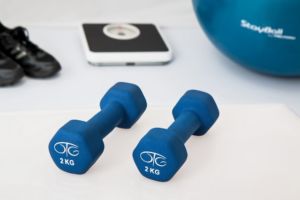
You are going about your day when suddenly, ouch! You throw your back out. Back injuries can cause severe pain and stiffness. You may even have trouble moving at all. Now you’re faced with a dilemma. Do you wait it out? Go to the ER? What if you can’t go to work?
At Vanguard Spine and Sport, we see many patients who are feeling overwhelmed by their back injury. Getting the proper care quickly can help you get on the road to recovery faster and prevent chronic pain.
Here are the steps you should take when you experience back pain.

1. Home Care
Most back injuries are not severe, but they can cause severe pain. It’s not necessary to go to the emergency room unless you are experiencing symptoms like loss of bladder or bowel control or numbness in the legs. Home care should be your first step when you hurt your back.
Lie on your back on the floor or on a firm mattress with pillows under your knees and an icepack on the injured area. Make sure there is a cloth or towel between you and the ice pack, and don’t leave it on for more than twenty minutes. Using ice will help to reduce inflammation, pain, and stiffness. You can also use over-the-counter anti-inflammatory drugs like ibuprofen or aspirin. It’s best to use both ice and medication for maximum anti-inflammatory benefit.
You may need to rest and use ice and medication for a few days after you first experience a back injury. You may still be in some pain, but you should notice a reduction in pain and stiffness.
2. Chiropractic Evaluation
After a few days of home care, you should consider seeing a chiropractor, especially if your symptoms have not improved. Chiropractors are equipped to diagnose a back injury using x-rays, examination, and even CT scans. It can be challenging to tell what is causing back pain without a professional evaluation. Muscles, ligaments, nerves, vertebrae, and discs between vertebrae can all become injured and cause pain. Treatment differs depending on which of these structures is damaged.
You may need more than one type of treatment to heal, so it’s best to pick a chiropractic clinic that offers more than just spinal adjustment.
3. Follow Your Treatment Plan
After you’ve been evaluated, your chiropractor can recommend a treatment plan. He’ll take into account your medical history and your specific injury. It’s not uncommon for a back injury to include several structures. For instance, you might have a herniated disc and a strained muscle. This is when a clinic that provides several services is needed. You may need spinal decompression therapy for your injured disc and physiotherapy for your strained muscle.
A provider who offers injections can use a corticosteroid or other agent to help relieve pain quickly. A good chiropractor will also advise you on what you can do outside of his office. You may need to avoid certain activities while you heal or work on correcting your posture. Your treatment plan will consist not only of in-office treatments but at-home stretches and exercises as well.
4. Don’t Cut Treatment Short
After the worst of your pain clears up, you may still need maintenance treatments for several months. These might include physiotherapy, chiropractic adjustment, or spinal decompression therapy. Maintenance treatments are typically administered less frequently than your initial treatment. It’s essential to keep these appointments and see your treatment through. Not doing so can lead to a setback with your pain and a longer healing time.
5. Adjust Your Lifestyle
A back injury can be a frightening experience, especially if you find yourself having to miss work. In addition to following the steps above, certain lifestyle adjustments may help prevent re-injury.
Most of us spend a large chunk of our day sitting. This can weaken core muscles in the back and abdomen, leaving your back more vulnerable to strain. Working with a physical therapist or fitness trainer to strengthen your core can protect your back in the future.
Posture is another common cause of recurring or chronic back injury. Creating an ergonomic work environment, wearing supportive shoes, and making a conscious effort not to slouch can prevent chronic pain and additional injury. Your chiropractor can help with posture rehabilitation and give you more tips on how to avoid straining your back.
6. Consider Your Long Term Goals and Options
Most back pain resolves within a month; this is especially true when it receives prompt treatment. Certain types of injuries may cause pain that lingers. You are more likely to experience chronic pain from a back injury if you smoke, are overweight, or have a sedentary lifestyle. Managing these risk factors can help prevent chronic pain. That being said, some people seem prone to chronic pain regardless of other risk factors. If you are experiencing chronic pain from a back injury and don’t want surgery, there are other options.
Platelet-rich plasma (PRP) injections are a leading-edge treatment for chronic pain. PRP uses your own blood plasma, injected into the injured area to stimulate healing. Many structures in the back don’t receive robust blood flow. Since blood flow is vital to the healing process, these structures can be slow to heal or experience stalled healing. PRP delivers healing factors to the area so your body can heal itself. Since your own blood is being used, side effects from PRP are practically non-existent. Relief can last anywhere from six months to a year, and certain injuries can be completely healed.
Talk to your provider if you are experiencing pain after your treatment plan ends. They can help you find a chronic pain treatment that is right for you.
Back Pain Treatment in Houston
Vanguard Spine and Sport is your one-stop solution for back pain. Our experienced team of care providers offers a full spectrum of back pain treatments. Our goal is to help your body heal so you can live life pain-free. Schedule a consultation today to start healing.






